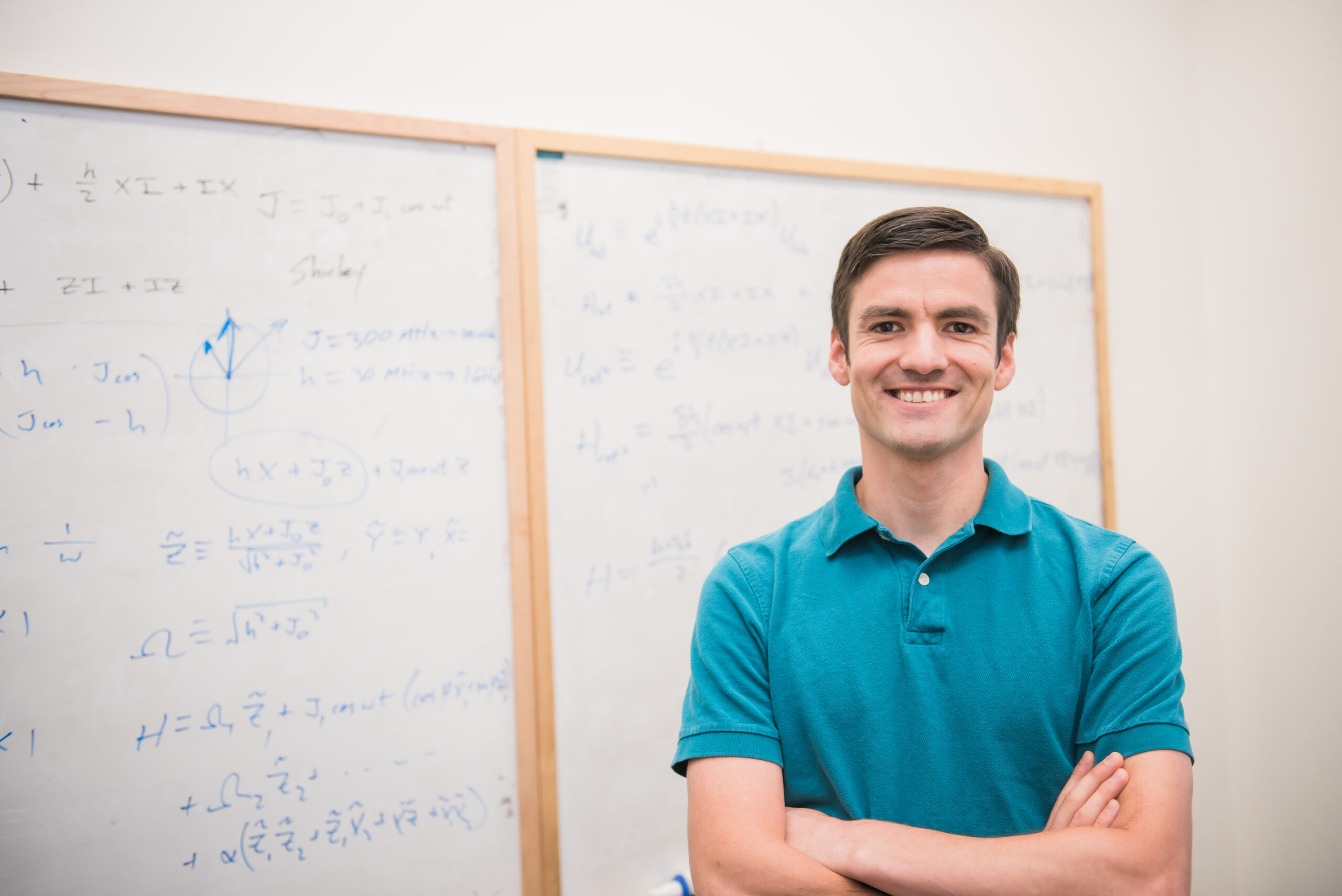Predictions suggest that advances in quantum computing could lead to computers vastly faster than any that currently exist—computers that could efficiently crunch the more than 2.5 quintillion (that’s 2,500 million billion) bits of data created every day. But, despite this grand vision, the reality is that “nobody has a useful quantum computer right now,” says Jason Kestner, assistant professor of physics at UMBC. Kestner plans to help change that with a new three-year grant from the National Science Foundation.
Traditional computers use a binary system to store information in “bits.” At any given moment, a single bit can either be in a state that represents 1 or 0. Quantum bits, however, can be 1, 0 or exist in “a weird, spooky in-between state,” Kestner says.
To understand a quantum bit or “qubit,” Kestner suggests picturing it as a point on the surface of a sphere. The two poles represent 1 and 0, but the bit can be anywhere on the surface. This added complexity is what grants quantum computing its power to store huge amounts of information in small spaces, but complexity is also the source of one of its major challenges: noise. Kestner’s project will address the noise in quantum computers, which he describes as “the major obstacle to building a quantum computer.”
So what is noise? Say a qubit is at a point on the sphere halfway between the two poles, on the sphere’s equator. While the qubit is idle, it can slide along the equator. The distance it slides is the noise in the system—unwanted inaccuracy that slips in due to external influences. If enough noise builds up across all the computer’s bits, its output becomes unreliable.
Theorizing on ways to compensate for noise in quantum computers goes back to 1950, but no one has successfully achieved this in a many-bit system, which is Kestner’s goal. His research dives into a complex “spin echo” technique and asks, “How can we return the qubits to their rightful positions without disturbing anything else in the system?”
Kestner is a theoretical physicist, so the work that he and graduate student Fernando Calderon Vargas do is “a lot of math,” he explains. Calderon Vargas has published promising preliminary results. Now Kestner is starting to look into collaborations with experimental physicists who can test the new theories.
“It’s going to be a challenge to optimize this for particular experiments,” he says. Each experimental setup will be a little different and require tweaks to the equations.
As a quantum computing researcher, Kestner has long been fascinated by the fact “that something so counter-intuitive could be real,” but the incredible potential utility of advances in this field are what make it so exciting to him today. He shares, “The fact that we could use quantum weirdness to actually do something useful is pretty cool.”

